Clancy Tucker's Blog, page 147
July 11, 2018
12 July 2018 - THE AWESOME KOMODO DRAGON
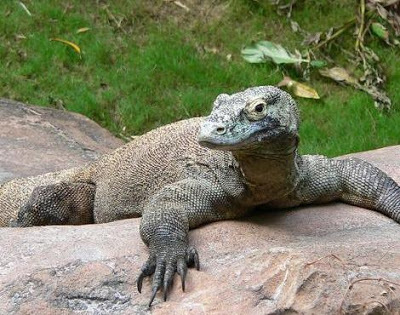
THE AWESOMEKOMODO DRAGON
G'day folks,
Welcome to some very interesting facts about an awesome creature.
The Komodo Dragon is a large speciesof lizardthat is only found on a handful of islandsin the Indonesian archipelago. Not known to the world until the First World War, the Komodo Dragon is actually a speciesof Monitor Lizard that has been evolving in islandisolation for millions years, which has led to it becoming very large indeed. The Komodo Dragon is not only the largest lizardin the world, but it also one of the most aggressive and is so powerful that it is able to take preymany times its own size. However, Komodo Dragons are also in severe danger in their natural environments as hunting and habitatloss, along with a shortage of prey, has led to population declines on the few islandswhere they are found in the Komodo National Park, meaning that they are now listed on the IUCN's Red List and therefore have some legal protection.
Komodo Dragon Anatomyand Appearance
The Komodo Dragon is an enormous reptilethat can grow up to three meters long and weigh 150kg. They are incredibly strong and powerful with long, thick bodies, short, muscular legs and an almighty tail that is used for both fighting and for propping the animalup when it is standing on its hind legs. The Komodo Dragon has long and sharp, curved claws that are often used for digging and its greyish brown skin is covered in small scales and folds around the neck. Komodo Dragons have relatively small heads compared to their large body sizeand wide, powerful jaws that conceal a mouth that is filled with deadly bacteria. Although the Komodo Dragon has good eyesight, the majority of its surroundings are sensed to smell which the Komodo Dragon does with its long and deeply forked tough. By flicking its tongue out of its mouth, the Komodo Dragon is able to "taste" scent particles in the air to locate both live and dead preyup to 8km away.
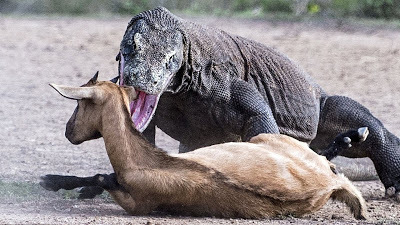
Komodo Dragon Distribution and Habitat
Although the Komodo Dragon would have once been widespread across many Indonesian islands, they are today confined to just five which all lie in the Komodo National Park. The islandsof Komodo, Rintja, Gillimontang, Padar and the western tip of Flores are the last remaining homes for these enormous animalsthat are most commonly found in open woodlands along with dry savannah and on scrubby hillsides, and can also be found inhabiting dried-up river beds. It is thought that Komodo Dragons evolved to be so big on these islandsdue to the presence of a number of large mammalian speciesthat have since gone extinct. Today however, they are becoming more threatenedin their natural environments with the loss of their habitatsto deforestation for timber has pushed the last remaining populations into smaller and more isolated regions.
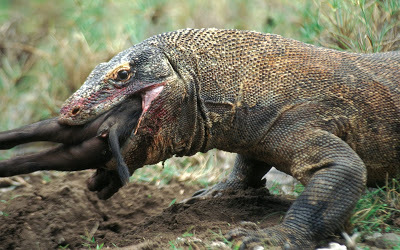
Komodo Dragon Behaviourand Lifestyle
The Komodo Dragon is a solitary and powerful predatorthat roams a territorywhich is dependent on the individual's size, with the average adult covering a distance of around 2km every day. They are also known to be excellent swimmers, travelling from one islandto another over a relatively long distance. Although they are solitary animals, a number of Komodo Dragons will often gather around a single kill with smaller individuals normally having to give way to the larger ones. In orderto catch such large animals, Komodo Dragons can sit for hours hidden in the vegetation and are well camouflaged by their grey-brown skin as they sit waiting for a preyanimalto pass by. The Komodo Dragon then ambushes its victim with incredible speed and force. Although the majority of initial attacks are successful, if the animalsomehow manages to escape then the bacteria transferred from the Komodo Dragon's mouth in the bite-would, causes the flesh to become septic and kills the preywithin 24 hours.
Komodo Dragon Reproductionand Life Cycles
Besides when feeding on a large carcass, Komodo Dragons can also be seen in the company of one another during the breeding season when, in September, nearby males fight one another by standing on their hind legs and propped up by their tails, try to win the right to breed with the local females. After mating, the female Komodo Dragon lays up to 25 leathery eggs in a hole that she digs into the soft sand. The young hatch after an incubation period that lasts for between 8 and 9 months and are boldly marked with cream bands (which they lose as they get older), and are completely independent from when they leave their shell. However, until they grow to a larger size, young Komodo Dragons will venture up into the trees where they will spend most of their time until they are big enough to look after themselves on the ground. Komodo Dragons tend to live for an average of 30 years in the wild.
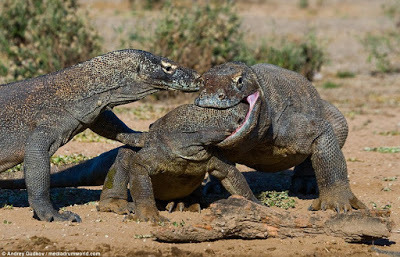
Komodo Dragon Dietand Prey
The Komodo Dragon is a carnivorous animalthat only hunts and kills large animalsin orderto survive in its natural surroundings. Adult Komodo Dragons are able to kill preymuch larger than themselves as even if they are not successful at killing it on ambush, they will then follow it for miles until it eventually dies of the blood-poisoning caused by the deadly bacteria in the Komodo Dragon's mouth. Large mammalsmake up the bulk of the Komodo Dragon's dietincluding Pigs, Goats, Deerand even Horsesand Water Buffalo (all of which have been introduced to the islandsby people). Young Komodo Dragons however, preyon smaller animalsin the trees such as Snakes, Lizardsand Birds. The teeth of the Komodo Dragon are sharp and serrated but they mean that this animalcannot chew. Instead they tear bits off the carcass and throw it backwards into their mouths, able to swallow it whole aided by their flexible neck muscles.
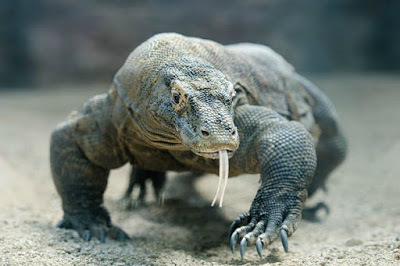
Komodo Dragon Predatorsand Threats
Due to the fact that the Komodo Dragon is the most dominant predatorin its environment, mature adults have no natural predatorsin their native habitats. The smaller and more vulnerableyoung however, seem to have adapted to spending their initial days in the trees to avoid being eaten by larger Komodo Dragons. Since the arrival of people on these islandsthough, things have changed dramatically with Humanshaving hunted the Komodo Dragons and encroaching on their native habitatswith their growing settlements and forest clearance for both timber and agriculture. Komodo Dragons are also threatenedby volcanic activity on these geologically active islandswhich can cause declines in their preyspecies, in turn affecting the local Komodo Dragon populations.
Komodo Dragon Interesting Facts and Features
The Komodo Dragon is known to have fifty different typesof toxic bacteria in their saliva that thrive on traces of flesh, causing bite-wounds to become quickly infected. Recent research however, indicates that the real reason for such a high success rate in poisoning its preycould be down to the fact that the Komodo Dragon may have a venom gland in its mouth. Although Komodo Dragons have thrived in this part of the Indonesian archipelago for millions of years, they were not known to the world until around a century ago when reports came in from a pilot that swam to Komodo Islandafter his plane went down. The immense sizeof the Komodo Dragon is thought to come from the fact that they would have once hunted large mammalsthat would have then existed in Indonesia, including a speciesof Pygmy Elephantwhich is thought to have now been extinctfor thousands of years. This means that the main preyof the Komodo Dragon today, has all been introduced to the islandsby Humansettlers.
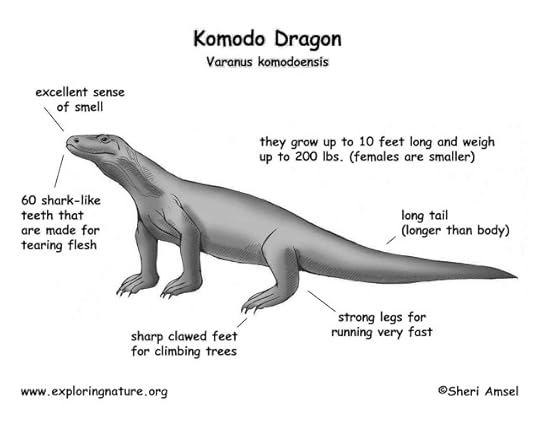
Komodo Dragon Relationship with Humans
Since their discovery on the islandsin the Komodo National Park around 100 years ago, Komodo Dragons have both fascinated and utterly terrified people as we learn more and more about them. Habitatloss on the islandshas not only meant that Komodo Dragons are being pushed into increasingly isolated regions, but they are also being brought into closer contact with Humanactivity and are known to kill livestock on occasion. Despite their seemingly slow and docile nature, Komodo Dragons can run at speeds of up to 11mph in short bursts and are actually one of the world's known "man-eaters". People have not only been ambushed, bitten and then tracked by Komodo Dragons in the wild but they have also been known to attack Humanswhen they are kept in captive environmentsand either escape or are allowed to get too close.
Komodo Dragon Conservation Status and Life Today
Today, the Komodo Dragon is listed by the IUCN as a speciesthat is Vulnerablein its natural environment and therefore potentially faces extinction in the near future. Although once widespread on numerous Indonesian islandsthat they are now confined to just a few with between 3,000 and 5,000 individuals thought to be left roaming the rich, volcanic forests. Increasing interest in them from the tourist industry though has meant that local people have more reason to try and protect them and the handful of habitatswhere they still survive.

Clancy's comment: What an extraordinary creature. I would love to capture them on film, but only from a distance.
I'm ....
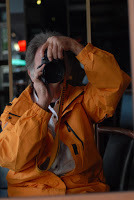

Published on July 11, 2018 15:19
July 10, 2018
11 July 2018 - FIVE-STAR REVIEW FOR CLANCY TUCKER'S - 'A DROVER'S BLANKET'
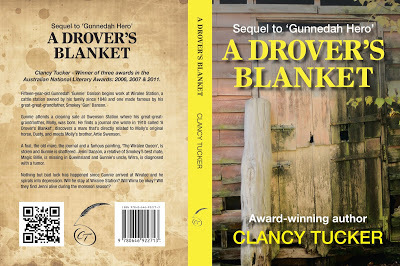
FIVE-STAR REVIEW FOR CLANCY TUCKER'S - 'A DROVER'S BLANKET' -
G'day folks,
Well, one of my former guests, best-selling Canadian author, Diana Sobolewski, has read the sequel to 'Gunnedah Hero' - 'A Drover's Blanket', and written a great review. Here it is ...
Customer Review
5.0 out of 5 stars Entertaining read with take-away lessons for us all!
By Amazon Customer on April 2, 2018
Format: Kindle Edition | Verified Purchase
Fourteen year old Gunnedah 'Gunnie' Danson has more in common with his great, great, great grandfather, Smokey Danson, the Gunnedah Hero, than he knows. Smokey is a drover (cattleman) in drought-stricken Australia of 1910 with a love for his family, the land and his homestead Wiralee Station. Gunnie is a city slicker in modern drought-stricken Australia and not very aware of what life was like back then nor even of the hardships gripping farmers in his own time. But that all changes when he reads Smokey's journal.
Gunnie reads a young drover's account of how he drove cattle far from his homestead because Wiralee Station could not sustain them and the family couldn't survive the loss. Along the way he encountered many difficulties, but discovered his inner strength, made life-long friendships, learned about the Aboriginal way of life and came to understand what's truly important. An act of courage and kindness earned fourteen year old Smokey Danson the title of Gunnedah Hero. His good deed was rewarded and Smokey came home victorious in more ways than one.
Australian author Clancy Tucker weaves a fascinating tale of two young men of the same age living decades apart in his award-winning book, 'Gunnedah Hero'. All indications are that Gunnie Danson has more than a little Smokey in him. In the sequel, A Drover's Blanket, Clancy Tucker confirms it.
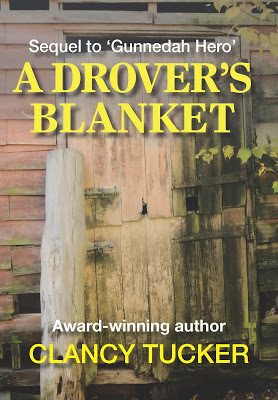
A 'Drover's Blanket' continues the story, but this time the writings of great-great-grandmother, Molly Jane Danson, impact Gunnie's life and his attachment to Wiralee grows much to the delight of his uncle Wirra. We are introduced to other characters that Gunnie bonds with; blurring generational lines. Gunnie makes valuable contributions not only learning the jobs at Wiralee Station and working hard for his place, but by suggesting improvements to benefit the family going forward. I really like how the author promotes the idea that young people have a lot to offer given the chance. In this book, the adults are astute enough to recognize this.
Gunnie copes quite well during a series of unfortunate events and does his best work when the plane his friend Jenni Danson is traveling home on crashes, and harsh weather hamper search efforts. Gunnie comes up with an ingenious idea to enlist the help of the Aboriginal people.
One calamity after another since his arrival, including his uncle Wirra being diagnosed with a tumor, finally has Gunnie succumbing to depression. This is alarming and unexpected to those around him and the reader. But don't worry, you'll be smiling by the end of the book.
The author is a great storyteller so he can't help but write a book that has vivid descriptions, interesting characters and snippets of Australia's history, but it's obvious that he set out to do more with the Gunnedah Hero and A Drover's Blanket.

Clancy Tucker brings awareness to how a young person who's excelling can still be vulnerable to negative thoughts and depression. He's also quite effective at showing how we need each other in this divisive world and that we are stronger when we stand together.
Molly's letter to the reader at the end of the book is uplifting and inspirational. That alone is worth the price of this book.
Suitable for young adults, but adults can learn something too.
Diana Sobolewski
Best-Selling Canadian Author
www.dianasobolewski.com
DIANA SOBOLEWSKI'S WEBSITE

Clancy's comment: Much appreciated, Diana. It's always an honour for an author to receive a book review from a best-selling author.
Love ya work!
I'm ...
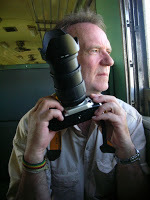
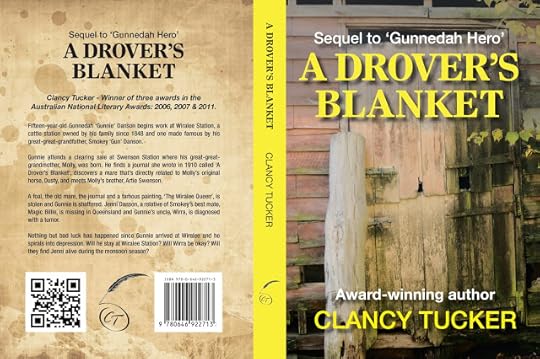
Published on July 10, 2018 14:14
July 9, 2018
10 July 2018 - HEARTBREAK WITHIN A PARIS MANSION

HEARTBREAK WITHIN A PARIS MANSION
G'day folks,
This story is quite sad, but similar to many families in Europe.
M useums are usually a feast for the eyes, but rarely are they a treat for the heart. Cozied up beside Paris’ Parc Monceau you’ll find just that: the opulent Musée Nissim de Camondo, a perfectly preserved mansion from 1911 that belonged to the affluent Camondo family. As stunning as the interiors and antiques are, it’s the heartbreaking story of the family that stays with you long after you’ve left their time capsule home.

The Camondo family came from a long line of Sephardic Jews that had fled the Iberian Peninsula in the Spanish Inquisition, finding refuge in the Ottoman Empire, and ultimately founding one of its largest banks. They helped modernise Istanbul with state-of-the-art urban development plans, and the creation of a new school.

Fast forward to the mid 1800s, when Moïse or “Moses” Camondo is at his peak as one of the greatest bankers and philanthropists of the era. He comes to Paris’ swanky 8th arrondissement to set up house where many other affluent Jewish families live. By the end of the Second Empire, the house at 63 rue Monceau became the hub for many members of the family, notably Moïse’s beloved children Nissim and Béatrice.


The interiors were loosely modeled after Marie Antoinette’s Petit Trianon, and with over 20 rooms and three floors to fill with antiques, the Camondo’s wasted no time in furnishing their personal palace.

The Camondo family’s taste in art and antiques was so fine tuned, that they actually ended up donating many of their works to the Louvre in their lifetime. The house became the crown jewel of the rue Monceau, and the perfect setting for the Camondos to entertain some of the world’s most important business men and intellectuals.
As a prominent Jewish family, the dining room became the heart of the household. It was where the Camondos broke bread with their closest friends and family, and where they gathered for Shabat every Friday.

There was even a silver dinner service that had originally been commissioned by Catherine II of Russia. The table remains set to this day, with not a knife or fork out of place.

Moïse also collected porcelain dishes, and built an entire room dedicated to his collection:

The estate continued to flourish, with the good times ever rolling and the antiques ever-changing. But then the war came. And as you wander from floor to floor, you’ll notice an abundance of photos of the dashing Nassim dotted on the walls, which brings us to the family’s heartbreaking turn of events.

Prior to the outbreak of WWI, Nissim was expected to take over to fill his father’s business shoes as his only son. But at the on-set of the war, he decided to serve in the army to defend France. He became a decorated pilot, fighting at both Verdun and in the battle of the Somme.

Finally, in 1917, he was shot down mid-air, and his death shook the family to its core. The once lively Camondo household became quiet, and his father retreated from Paris’ social scene.
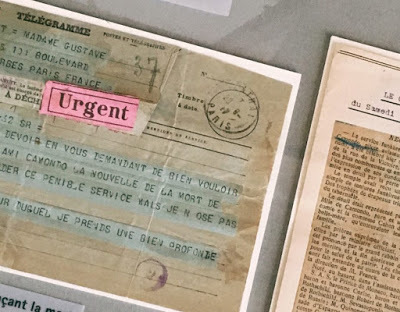
Upon his own death in 1935, Moïse bequeathed the estate to the city of Paris to serve as a museum in his son’s honour, but under one condition: that the objects from their old life together remain precisely where he had left them. Béatrice became the last bearer of the prestigious Camondo name, but married and converted to Catholicism during the German occupation to protect herself. Despite her efforts, she and her family were abducted during the SS roundups, and died in Auschwitz in 1945.

“Over the years, the priceless splendour of the collection has increased,” explained a museum representative, “This place is pervaded by Nissim’s memory. By creating the “Nissim de Camondo museum” and devoting his mansion and collection to the memory of his son, Moïse found a way of resisting oblivion."
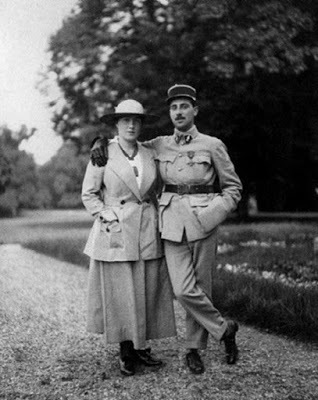
That’s why, in a city where breathtaking museums are a dime a dozen, Musée Nissim de Camondo, stands out from the pack. Walking its halls reminds you that this was once a home, and one steeped in stories of love, beauty, war, and tragedy. Stories, in other words, that are worth retelling.

Clancy's comment: Extraordinary mansion but a sad story, and not uncommon for many families who fell into the hands of the Nazis.
I'm ...


Published on July 09, 2018 14:37
July 8, 2018
9 July 2018 - STEVEN SPIELBERG
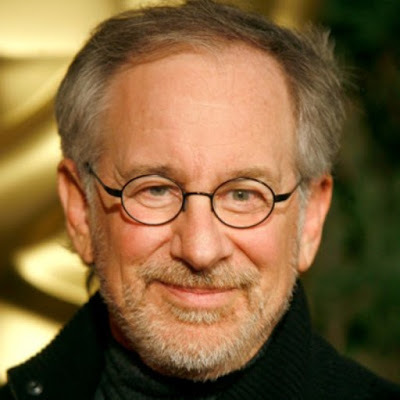
STEVEN SPIELBERG
G'day folks,
Welcome to some background notes on one of the most famous film makers. Steven Allan Spielberg KBE OMRI is an American filmmaker. He is considered one of the founding pioneers of the New Hollywood era and one of the most popular directors and producers in film history.
Academy Award-winning director, screenwriter and producer Steven Spielberg's films include 'Jaws,' 'E.T.,' 'The Color Purple' and 'Schindler's List,' among many others.
Who Is Steven Spielberg?
Born on December 18, 1946, in Cincinnati, Ohio, Steven Spielberg was an amateur filmmaker as a child. He went on to become the enormously successful and Academy Award-winning director of such films as Schindler's List, The Color Purple, E.T.: The Extra-Terrestrial, Saving Private Ryan, Catch Me If You Can, Lincoln and Bridge of Spies. In 1994, he co-founded the studio Dreamworks SKG, which was purchased by Paramount Pictures in 2005.
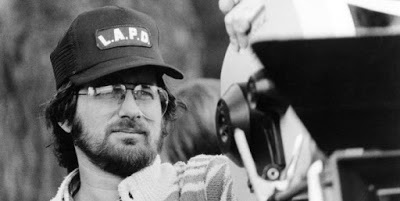
Early Career Filmmaker, director and producer Steven Allan Spielberg was born on December 18, 1946, in Cincinnati, Ohio. An amateur filmmaker as a child, Spielberg moved several times growing up and spent part of his youth in Arizona. He became one of the youngest television directors for Universal in the late 1960s. A highly praised television film, Duel (1972), brought him the opportunity to direct for the cinema, and a long string of hits have made him the most commercially successful director of all time.
Cinematic Highlights Spielberg's films have explored primeval fears, as in Jaws (1975), or expressed childlike wonder at the marvels of this world and beyond, as in Close Encounters of the Third Kind (1977) and E.T. (1982). He has also tackled literary adaptations, such as The Color Purple (1985) and Empire of the Sun(1987). And audiences around the world were riveted by the continuing adventures of his daredevil hero Indiana Jones in such films as Raiders of the Lost Ark (1981) and Indiana Jones and the Temple of Doom (1984). Imaginative fantasy is dominant in Spielberg's Peter Pan-inspired Hook(1991), while Jurassic Park (1993) and its sequel The Lost World: Jurassic Park (1997) rely on traditional action and monster-horror sequences.
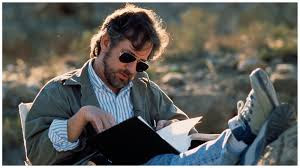
Spielberg is also known for his impressive historical films. The Holocaust drama Schindler's List (1993), starring Liam Neeson as a businessman who helps save Jewish citizens, won seven Academy Awards, including Spielberg’s first win as best director. In 1998, he revisited World War II, this time from the perspective of American soldiers in Europe in Saving Private Ryan(1998), which earned him another Academy Award for best director. His first film company, Amblin Entertainment, which was founded in 1982, produced several other successful movies, notably Back to the Future (1985) and its two sequels, and Who Framed Roger Rabbit(1988).
Dreamworks and Sci-Fi Adventures In 1994 Spielberg formed a new studio, Dreamworks SKG with Jeffrey Katzenberg and David Geffen. (It was later bought by Paramount Pictures in 2005.) In 2001 he completed the science fiction outing AI: Artificial Intelligence, a project begun by Stanley Kubrick. Later films include another sci-fi adventure Minority Report (2002) and the Academy Award-nominated Munich (2005). He also served as producer for the Clint Eastwood-directed WWII films Flags of Our Fathers (2006) and Letters from Iwo Jima (2006).
Spielberg reunited with George Lucas for the latest installment of the Indiana Jones saga in 2008. Spielberg directed the film, which featured Harrison Ford reprising his role as the famed adventurer in Indiana Jones and the Kingdom of the Crystal Skull. Spielberg also helmed 2011's animated The Adventures of Tintin, based on the popular comic series by Hergé. It was his film version of War Horse (2011), however, that won him more critical acclaim. The movie received six Academy Award nominations.
In November 2012, Spielberg debuted another legendary film project, Lincoln, in which he directed Daniel Day-Lewis in the biopic of President Abraham Lincoln. Joseph Gordon-Levitt played son Robert and Sally Field portrayed wife Mary Todd Lincoln in a much anticipated, much talked about drama that was ultimately nominated for 12 Oscars, winning two. In addition to directing, Spielberg has been instrumental in numerous projects as an executive producer. He has helped bring such television shows as Terra Nova, Smash, Falling Skies and Extant to the small screen.
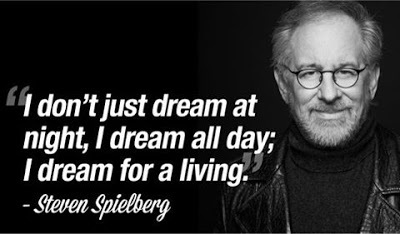
Spielberg also served as executive producer for the record-breaking 2015 blockbuster Jurassic World. Later that year he released another directorial project, the Oscar-nominated Cold War thriller Bridge of Spies, starring Tom Hanks. The two had previously worked together on projects like Catch Me If You Can (2002) and The Terminal (2004) as well as Saving Private Ryan.
After taking on an adaptation of Roald Dahl's The BFG (2016), Spielberg again tapped Hanks for a leading role in The Post (2017), pairing him on screen with acclaimed actress Meryl Streepfor the first time. The movie centers on the actions of The Washington Postpublisher (Streep) and editor (Hanks) as they attempt to go public with the Pentagon Papers, a trove of government secrets, over the objections of President Richard Nixon's administration.
Spielberg was strongly drawn to the contemporary relevance of the story, which earned a Golden Globe nomination for Best Director and an Oscar nod for Best Picture. Along with delving into the issue of governmental cover-ups, The Post explores the treatment of women in the workplace. "I need a motivational purpose to make any movie," Spielberg said. "When I read the first draft of the script, this wasn't something that could wait three years or two years — this was a story I felt we needed to tell today."
Awards and Honors Along with his three Oscar wins, Spielberg has received many other honors. He received the Irving G. Thalberg Memorial Award from the Academy of Motion Picture Arts and Sciences in 1986. In 2004, Spielberg received the Directors Guild of America Lifetime Achievement Award and the French Legion of Honor in recognition of his work. The following year, he was inducted into the Science Fiction Hall of Fame.
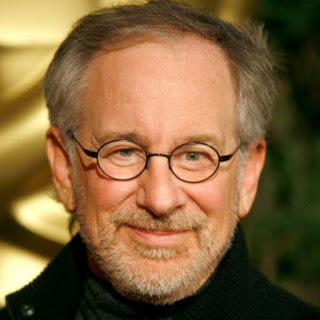
In November 2015, the iconic filmmaker was awarded the Presidential Medal of Freedom, the nation's highest civilian honor. Among his charitable efforts, after the February 2018 shooting at Florida's Marjory Stoneman Douglas High School, he announced he was donating $500,000 to the March for Our Lives protest.
Married twice, Steven Spielberg has a son from his first marriage to actress Amy Irving. He has five children and two stepchildren with current wife Kate Capshaw.
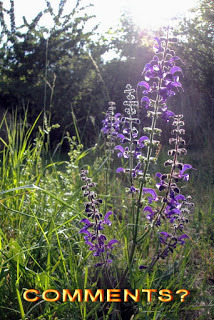
Clancy's comment: We all have special gifts we are born with but many don't look hard enough to find them. Steven Spielberg obviously found his gifts.I'm ...


Published on July 08, 2018 15:02
July 7, 2018
8 July 2018 - A COLLECTION OF HUMOROUS AND INSPIRING QUOTES

A COLLECTION OF HUMOROUS AND INSPIRING QUOTES
G'day folks,
It's time for a chuckle. Brace yourself ...
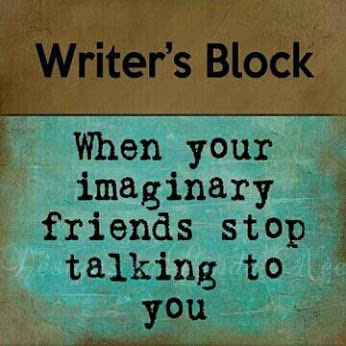
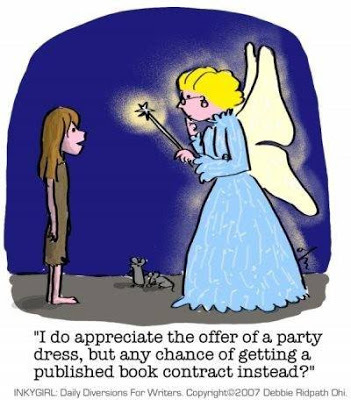
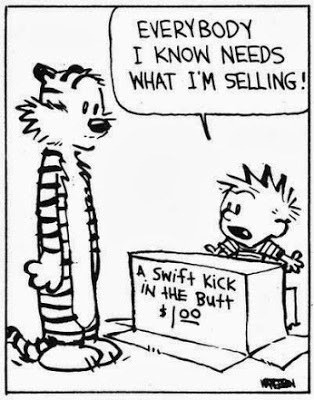
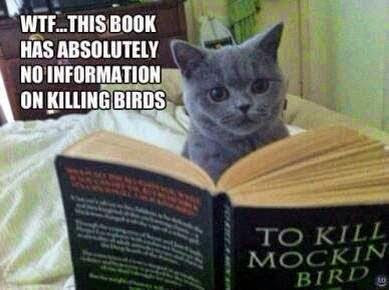


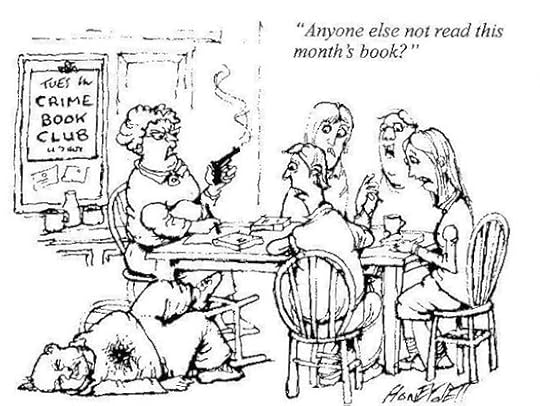
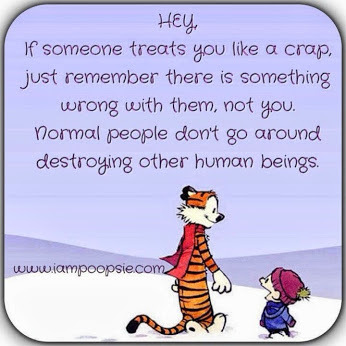
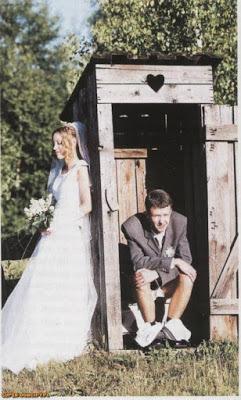
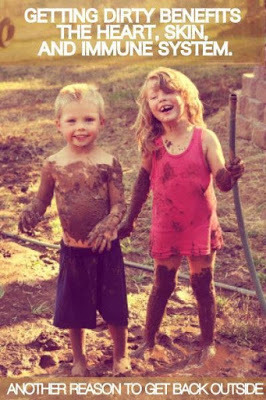
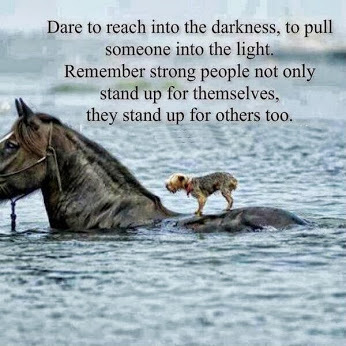

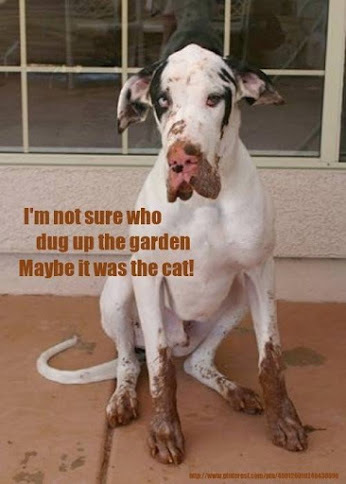


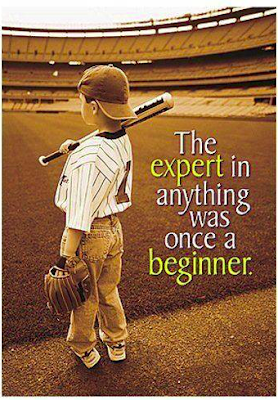
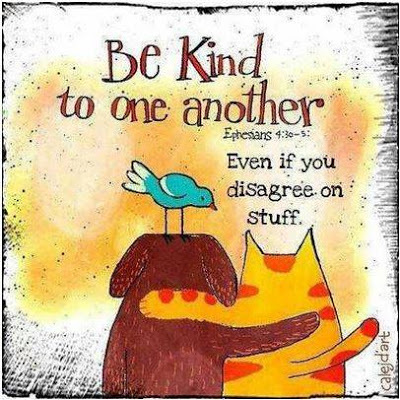

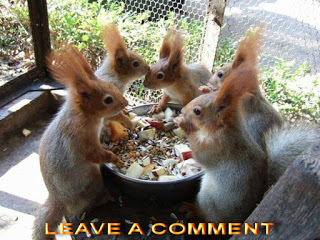
Clancy's comment: Yep, I chuckled a lot. Did you?
I'm ...
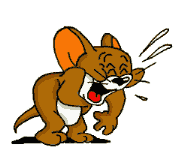
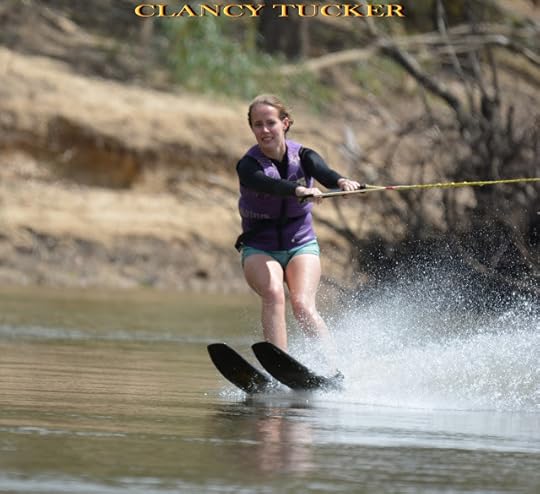
Published on July 07, 2018 15:02
July 6, 2018
7 July 2018 - U.S.A - A WALK DOWN MEMORY LANE
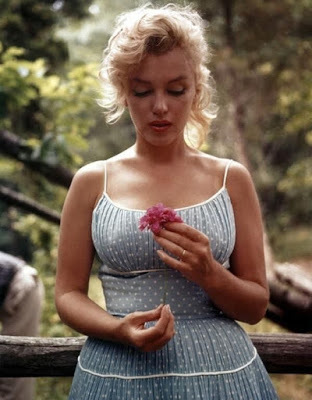
U. S. A - A WALK DOWN MEMORY LANE -
G'day folks,
Welcome to some more old snapshots that you may not have seen before.

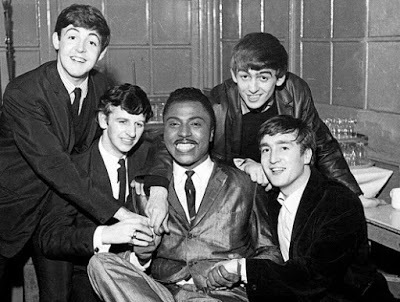
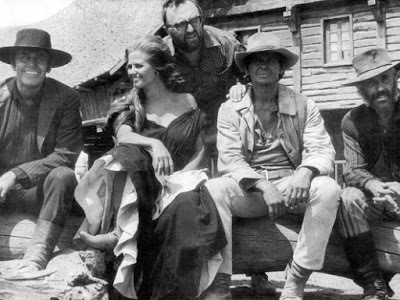
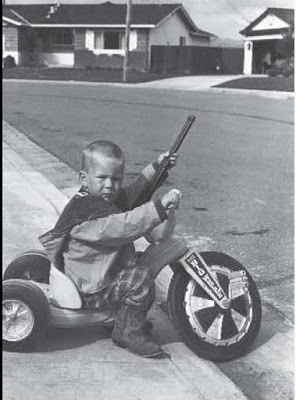

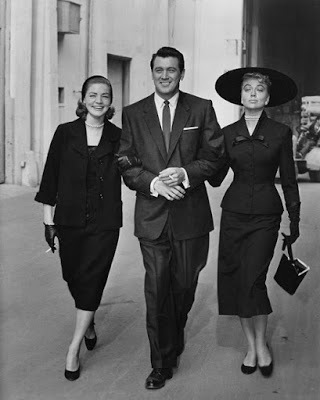
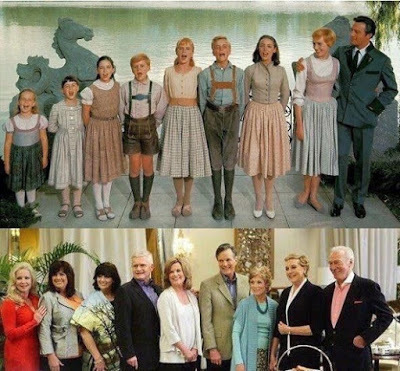
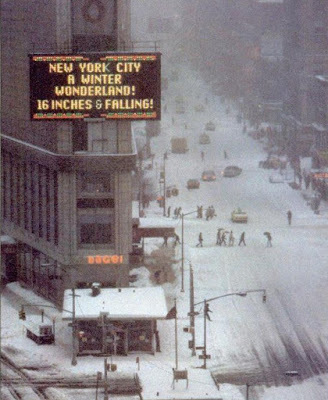
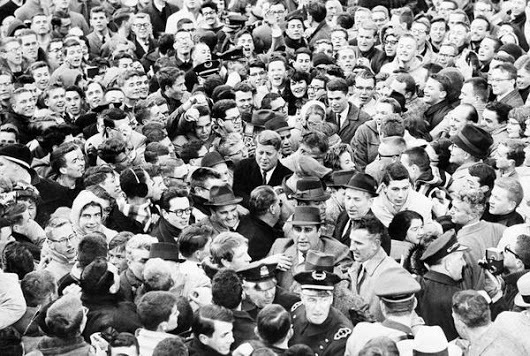
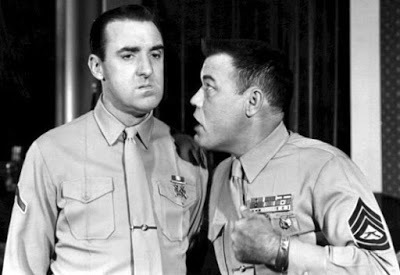


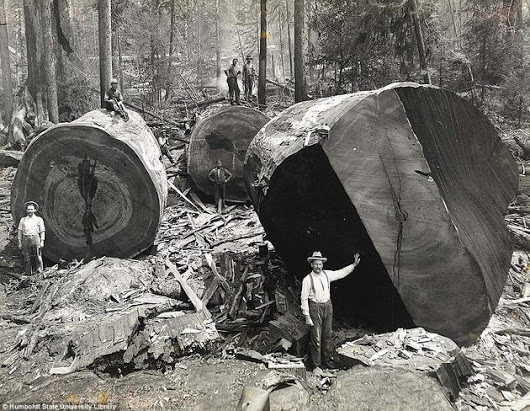
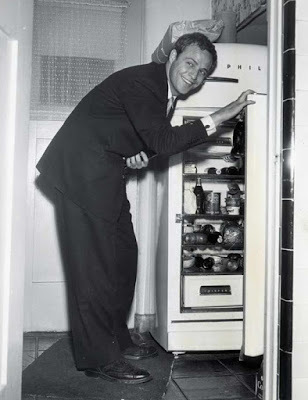
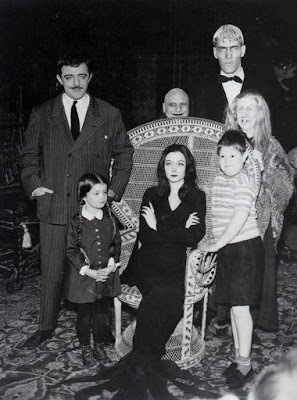

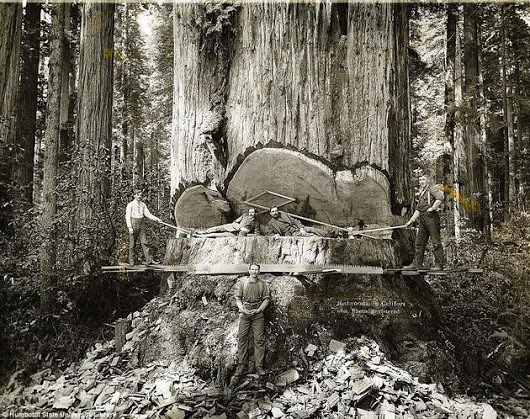

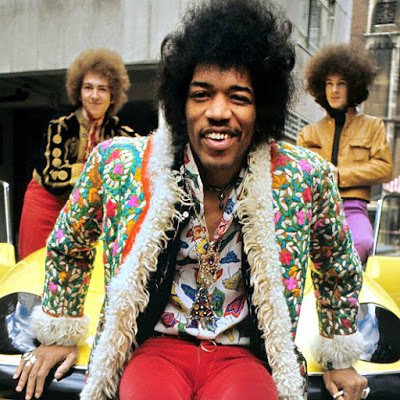
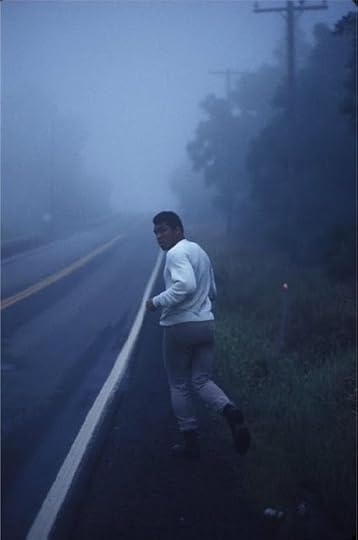


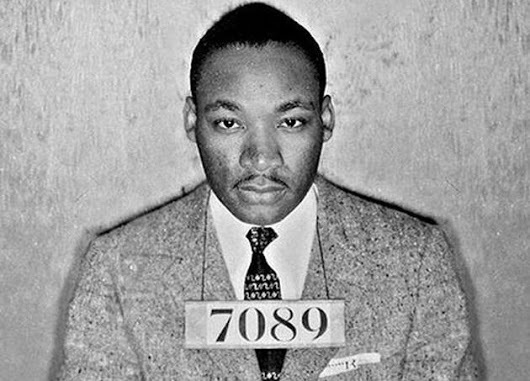

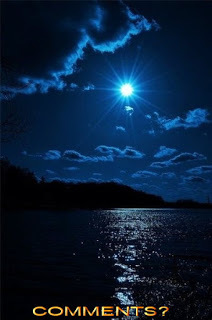
Clancy's comment: Ah, there are a few heart throbs here.
I'm ...


Published on July 06, 2018 16:18
July 5, 2018
6 July 2018 - KAREN CIOFFI-VENTRICE - Guest Author and Ghostwriter

KAREN CIOFFI-VENTRICE - Guest Author and Ghostwriter -
G'day folks,
Today, I interview a multi-talented writer from the U.S.A.
Welcome, Karen ...
1. TELL US A LITTLE ABOUT YOURSELF AND YOUR WRITING JOURNEY.
I’m a number of things as are most people today: wife, mother, grandmother, author, ghostwriter, and author/writer online platform instructor with WOW! Women on Writing.
I’ve lived in New York City until five or six years ago when I moved to Long Island – I didn’t get very far. LOL
I always liked to write. Like most writers I started writing as a child, primarily poems. I did this through my teens. Then when I had my first child, she wouldn’t sleep. Pacing the hallway with her at night, I started humming a tune and added words. I wrote the sheet music to it and it became our family lullaby.
Many, many years later, my children decided I should turn the lullaby into a picture book. That’s how my writing and publishing journey began.
2. WHEN AND HOW DID YOU BECOME A WRITER?
Turning my lullaby into a picture book was the starting point to becoming a writer. I joined writing groups, a critique group, and found a writing coach. And, I attended online writing conferences and read a lot about writing.
Through one of the conferences I took a workshop on promotion. It motivated me to create a group website, Writers on the Move. I asked authors and writers I’d met along the way to join and we started doing virtual book tours.
It’s been almost 10 years and we’re still at it. We don’t do virtual book tours any longer though. We now use content marketing, blogging, to bring visibility to the members and the group.
In addition to writing for children, with my business background, I started ghostwriting articles for business sites and health sites. That took me in another direction for a while until I realized it’s so very important to focus on one thing. So, I put that focus back into children’s writing.
While I really enjoy both types of writing, I find children’s writing, whether for myself or for ghosting clients, more rewarding.
3. WHAT TYPE OF PREPARATION DO YOU DO FOR A MANUSCRIPT? DO YOU PLAN EVERYTHING FIRST OR JUST SHOOT FROM THE HIP?
I’m a pantser. I shoot from the hip. Although, for my middle grade fantasy I used an outline of an old Chinese tale to work from. It was given to me by a nonfiction Chinese writer in one of my writing groups.
But, it also depends on the type of story being written. All my children’s picture books and chapter books are from the hip. If it’s a middle grade novel, it makes more sense to create some kind of outline, even if it’s simple. Once the basic direction is known, I let the story and the characters unravel themselves.
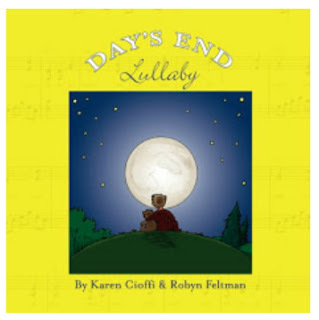
4. WHAT DO YOU ENJOY MOST ABOUT BEING A WRITER?
The thing I enjoy most about being a writer is to create something from nothing. You start with a blank page and whether you’re working from an outline you created or just jumping in, you begin to create a story. And, it can at times amaze you how it takes shape and how it grows. I just find it fascinating.
5. WHAT IS THE HARDEST THING ABOUT BEING A WRITER?
I guess rejection can be a tough part of being a writer. And, it’s not like other work where you go to an office with fellow workers. Most writers work out of their homes and they work alone.
And unless you’re self-publishing, it’s researching and submitting your work as often as you can. And, it’s continually coming up with new work so you always have things in the submission loop.
And then there’s the marketing.
6. WHAT WERE YOU IN A PAST LIFE, BEFORE YOU BECAME A WRITER?
I was an assistant controller for a manufacturing company. Then in 2000 I decided to give writing my all.
7. WHAT IS YOUR GREATEST WRITING ACHIEVEMENT?
My greatest achievement so far is my middle grade fantasy, “Walking Through Walls.” It based on an ancient Chinese tale and set in 16th century China. It took two years to write and I think it’s filled with great lessons that are subtly weaved into the story. And, it has a great ending. It was honoured with the Children’s Literary Classics Silver Award.
After this, making my clients thrilled to have their very own quality children’s book is a wonderful achievement.
8. WHAT ARE YOU WORKING ON AT THE MOMENT?
For my own stories, I have a three-book picture book contract with 4RV Publishing. And, I’m working on a sequel to “Walking Through Walls” as well as another middle grade novel.
I’m also working with a number of clients on their books.
9. WHAT INSPIRES YOU?
My grandchildren inspire me. And, I think the love of stories inspires me. Once I start writing a story, it’s like entering another world.
And, what’s amazing about writing is if something’s not working or you don’t like something in the story, you just rewrite it. The only limit you have is your imagination.
10. WHAT GENRE DO YOU WRITE?
I write children’s books, focusing on picture books, chapter books, and middle grade books. But, I also do young adult.
11. DO YOU HAVE ANY TIPS FOR NEW WRITERS?
My first tip for new writers is to learn the ropes. Self-publishing has opened a lot of doors, but some writers think it’s a pass-go card. Writing and publishing a less than quality book reflects poorly on the writer and on the industry. Take the time to learn how to write. Take online and/or offline courses.
My next tip is to persevere. Writing can be a tough business. It can bring lots of rejection and there’s lots of competition. Don’t let anything stop you. Keep writing and keep honing your craft.
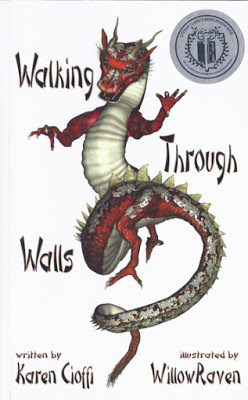
12. DO YOU SUFFER FROM WRITER’S BLOCK?
I’m so very fortunate, I haven’t suffered from writer’s block.
13. DO YOU HAVE A PREFERRED WRITING SCHEDULE?
I don’t have an actual writing schedule, like writing from ten to five, or something like that. But, I do write every day, including weekends.
14. DO YOU HAVE A FAVOURITE WRITING PLACE?
Well, I don’t know if I’d call it a favorite writing spot, but as there’s no where else to write, I write in my living room.
15. WHAT IS YOUR GREATEST JOY IN WRITING?
I think this goes back to the question of what do I enjoy most about being a writer. It’s all about creating the story.
16. WHO IS YOUR FAVOURITE AUTHOR AND WHY?
I love Kate Chopin. I read “The Story of an Hour” by Chopin while attending college and it’s stayed with me since. That’s what a really good story should do.
And, Linda Sue Park because I love “The Single Shard.”
17. WHAT’S THE GREATEST COMPLIMENT YOU EVER RECEIVED FROM A READER?
From a reader of “Walking Through Walls,” the greatest compliment has been, “It’s really good.”
18. WHAT WAS THE WORST COMMENT FROM A READER?
Maybe enough people haven’t read my books yet, I haven’t had any bad comments.
19. WRITERS ARE SOMETIMES INFLUENCED BY THINGS THAT HAPPEN IN THEIR OWN LIVES. ARE YOU?
I don’t think writers can help but have some of what happens in their lives influence their writing. That’s what makes every story unique - it’s told from the perspective of an author who has her very own history and experiences. Is it possible to filter all that out?
20. OTHER THAN WRITING, WHAT ELSE DO YOU LOVE?
Aside from writing, I love the obvious stuff, God and family. I used to draw a lot, but that and accounting gave way to writing. Between family and writing, there’s not much time for anything else.
21. DID YOU HAVE YOUR BOOK / BOOKS PROFESSIONALLY EDITED BEFORE PUBLICATION?
I did get a professional edit on “Walking Through Walls,” but not for “Day’s End Lullaby.”
I meticulously self-edited both books.
In case new writers are reading this, I just want to mention that while self-editing is a must, as the author you can’t possible catch all your errors. You’re too close to the work. You know what you meant to say and you see what you meant to say. So if it’s at all possible, get your manuscript professionally edited.

22. DESCRIBE YOUR PERFECT DAY.
My perfect day in regard to writing would be if I had a new book submission going the rounds and I got a call from an agent or editor who wanted to take it on.
Okay, let me think bigger. My perfect writing day would be having one of my books hit the New York Times Best Sellers list.
23. WHAT ARE YOUR PLANS FOR THE FUTURE?
My plans for the future are to continue what I’m doing. I’m also making it a priority to attend more children’s writing workshops. It’s important to keep honing your craft and to keep up with new trends.
24. WHAT ARE YOUR VIEWS ON BOOK TRAILERS? DO THEY SELL BOOKS?
I think book trailers are an effective book marketing tool. People love visuals and getting a teaser or bits and pieces of a book can certainly help motivate someone to buy.
25. DO YOU SEE YOURSELF IN ANY OF YOUR CHARACTERS?
I do see myself in some of the characters I write. I think sometimes my values pop up here and there while telling a story.
26. DOES THE PUBLISHING INDUSTRY FRUSTRATE YOU?
The children’s publishing industry does frustrate me, especially the picture book side of it. But, it’s business and just like all businesses, publishing companies do what they do to make money. The editors have to find manuscripts that will do just that. So, they’re going to carefully choose books that they think will get past the acquisitions committee and go on to do well.
The best thing a writer can do is to keep learning, keep getting better at writing stories an editor would be willing to take a chance on. And, to keep submitting.
27. DID YOU EVER THINK OF QUITTING?
I’ve thought about quitting the writing business here and there, but never did.
28. WHAT WAS YOUR FAVOURITE MANUSCRIPT TO WRITE? WHY?
My favorite manuscript was “Walking Through Walls.” I love the ‘respect’ of the time period the story takes place. And, I enjoyed the research I did to get the place and period right. And, I just love how it turned out.
29. HOW WOULD YOU DEFINE ‘SUCCESS’ AS A WRITER?
I define success as a writer as creating page-turning books. Books that the reader remembers. Books that may even change a reader’s life.
30. WOULD YOU LIKE TO HAVE YOUR BOOKS MADE INTO MOVIES? EVER WRITTEN A SCREENPLAY?
I’d love if my books made it into a movie, wouldn’t every author? I’ve never written a screenplay, but will probably take some courses on script writing as I’ve gotten a few queries for it.
31. HOW MUCH THOUGHT GOES INTO DESIGNING A BOOK COVER?
A book’s cover is the first thing a potential reader will see. And, it’s probably the most significant determining factor for the person to buy the book.
A lot of thought must go into designing the book cover.

32. WRITING IS ONE THING. WHAT ABOUT MARKETING YOU, YOUR BOOKS AND YOUR BRAND? ANY THOUGHTS?
You can write a great book, but if no one knows about it . . .
Book marketing is a must. I have a number of strategies I use to bring attention to me and my work. I’m also an author/writer online marketing instructor with WOW! Women on Writing. I give online classes through them.
If there are new authors out there, the first thing needed is an author website.
33. ARE YOUR BOOKS SELF-PUBLISHED?
One of my books, “Day’s End Lullaby” is self-published. “Walking Through Walls” is traditionally published.
34. DESCRIBE YOURSELF IN FIVE WORDS.
Hmm. Five words I would use to describe myself would be: hard working, loyal, responsible, positive, and creative.
35. WHAT PISSES YOU OFF MOST?
The things that most make me ‘mad and sad’ are hatred, dishonesty, and the attitude of entitlement.
36. WHAT IS THE TITLE OF THE LAST BOOK YOU READ? GOOD ONE?
I’ve been doing a lot of reading for my work, so the latest book I read is “The Most Magnificent Thing” by Ashley Spires. It’s an excellent children’s picture book.
37. WHAT WOULD BE THE VERY LAST SENTENCE YOU’D WRITE?
I know it’d never fly in today’s publishing market, but I’d love to have my last sentence be, “And, they lived happily ever after.”
I think in today’s climate of anger, hatred, and craziness, everyone wants a happy ending.
38. ANYTHING YOU’D LIKE TO ADD?
I’d like to thank you for this interview opportunity, Clancy.

AMAZON
WRITING FOR CHILDREN
DAY'S END LULLABY

Clancy's comment: Thank you, Karen. I admire anyone who can write for young kids. Best wishes to you, and wishing you top book sales.
I'm ....
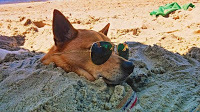

Published on July 05, 2018 14:25
July 4, 2018
5 July 2018 - BEN MENDELSOHN - AUSSIE ACTOR
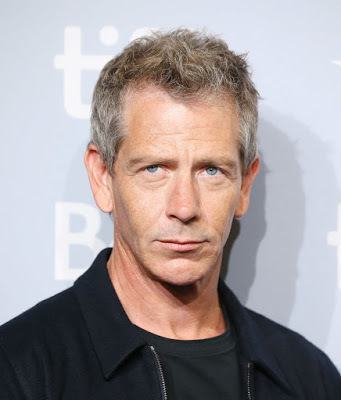
BEN MENDELSOHN
- AUSSIE ACTOR -
G'day folks,
Australia generally punches above its weight when it comes to producing actors and actresses. This man is one of them.
Paul Benjamin Mendelsohn is an Australian actor, who first rose to prominence in Australia for his role in The Year My Voice Broke and internationally for his role in the crime drama Animal Kingdom.
Ben Mendelsohn is an Australian actor who's often known for his villainous roles both in film and television, particularly in 'The Dark Knight Rises,' Netflix's 'Bloodline' and 'Rogue One: A Star Wars Story.'
Who Is Ben Mendelsohn?
Ben Mendelsohn (born April 3, 1969) is an Australian-born actor who gained international fame with the Australian crime drama Animal Kingdom (2010), which led to prominent supporting roles in the U.S., such as in The Dark Knight Rises (2012) and The Place Beyond the Pines (2012). Starting in 2015 the actor made a big splash playing the main antagonist in the Netflix family drama Bloodline, for which he won an Emmy, and two years later, playing villain Director Orson Krennic in Star Wars' Rogue One.

Notable Movie and TV RolesOutside of his extensive film and television work in Australia, here are some notable films that Mendohlson has recently appeared in:
'The Dark Knight Rises' (2012)
In Christopher Nolan's take on the Batman franchise, Mendelsohn played John Daggett, a minor antagonist who uses Bane and Catwoman to take control over Wayne Enterprises.
'The Place Beyond the Pines' (2012)
Appearing opposite Ryan Gosling, Mendelsohn played Robin Van Der Hook, an auto mechanic turned robber.
'Starred Up' (2013)
Mendelsohn took on the role of father Neville Love in this critically acclaimed British crime drama.
'Bloodline' (2015 - 2017)
Mendelsohn won an Emmy for Outstanding Supporting Actor in a Drama Series for his role as Danny Rayburn, the black sheep of a prominent Florida family who returns home to reveal dark secrets from their past.
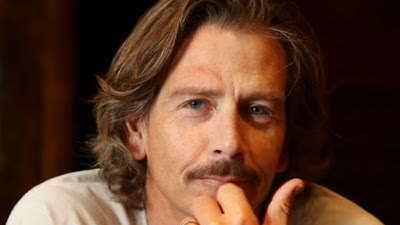
'Mississippi Grind' (2015)Starring opposite Ryan Reynolds, Mendelsohn played the role of Gerry, a down-on-his-luck gambler who teams up with a younger gambler Curtis (Reynolds) on a road trip down South to win back his fortune.
'Una' (2016)
Taking on a more disturbing role among the dark characters he's played, Mendelsohn appeared as pedophile Ray Brooks, who seduces a 13-year-old girl who later tracks him down as an adult, played by actress Rooney Mara.
'Rogue One: A Stars War Story' (2016)
Mendelsohn admitted to fulfilling a childhood dream by having the opportunity to star in a Star Wars movie. In Rogue One, he played villain Director Orson Krennic.
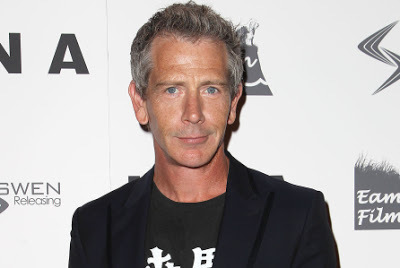
Early Life & Career in AustraliaBorn on April 3, 1969 in Melbourne, Victoria, Australia, Ben Mendelsohn grew up with a father who was an accomplished neuroscientist and a mother who was a nurse. Because of his father's burgeoning career as a medical researcher, the family was required to move around a great deal. Mendelsohn, along with his two brothers, lived throughout Europe and went to boarding school in the U.S. before returning to Melbourne to finish high school.
While in high school, Mendelsohn signed up for a drama course, thinking it'd be a breeze, but soon discovered he had a knack for memorizing lines. He ended up following up on an audition, which got him the part of Ted Morgan in the 1985 TV series The Henderson Kids, which led to more roles, including a stint on the Australian soap opera Neighbours.
On the big screen, Mendelsohn made a big impression with his role in the coming-of-age film The Year My Voice Broke(1987), winning an Australian Film Institute Award for Best Actor in a Supporting Role, and garnered other accolades for other films. In 2009 he was applauded for his emotionally stirring work in Beautiful Kate, and a year later received international acclaim as a psychopathic criminal brother in the family drama Animal Kingdom, for which he won multiple film awards.
Out-of-Work Actor
However, before he found himself being applauded for Animal Kingdom in 2010, Mendelsohn had gone through an almost decade's long dry spell. He was in his early 30s at the time and flying repeatedly to Los Angeles in hopes of opportunities that would never come. Finances were so tight he even worked as a dishwasher at a local restaurant and later at a bakery in Australia to make ends meet. To make things worse, Mendelsohn wasn't faring well on a personal level. He considers the early 2000s as a dark period in his life and admitted in an interview that some of the reasons why he couldn't attract great roles was due to his "excessive hedonism."
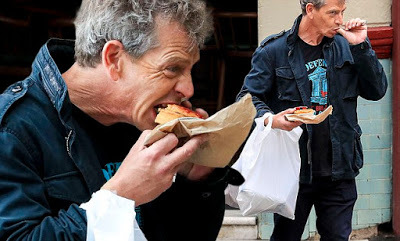
Personal Life
In 2012 Mendelsohn married British author-turned-director Emma Forrest with whom he had a daughter in 2014. The couple filed for divorce in 2016. The actor also has a daughter from a previous relationship. He currently lives in Los Angeles.
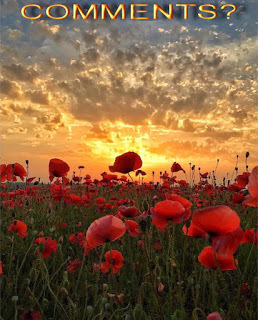
Clancy's comment: Go, Ben. Another great Aussie export.
I'm ...

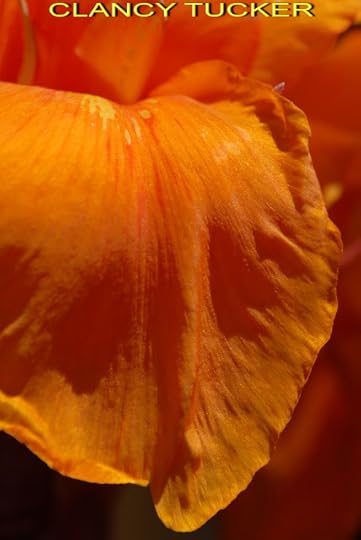
Published on July 04, 2018 14:45
July 3, 2018
4 July 2018 - THE AUSSIE KOALA
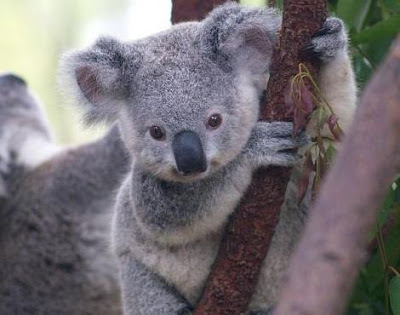
THE AUSSIE KOALA
G'day folks,
The Aussie koala is probably the creature most loved by tourists who visit Australia. Mind you, this continent, the driest on earth, is full of weird and wonderful creatures – and people!
Koala Classification and Evolution
The Koala is a small to medium sized mammalthat is found inhabiting a variety of different typesof forest in south-eastern Australia. Despite its appearance and the fact that it is also known as the Koala Bear, Koalas are in fact marsupials but are so distinctive amongst this specially adapted familyof mammalsthat they are classified in a scientific groupof their own. However, although they are now considered to be one of Australia's most iconic mammalspecieswhen European settlers first arrived things were very different, with millions of Koalas known to have been killed every year for their pelts (fur). The Koala is a unique animalthat famously feeds only the leaves of the eucalyptus trees which they inhabit but this dietis very hard to digest and lacks many of the vital nutrients that are key to the survival of a number of animalspecies. Today, although populations are stable and widespread the Koala is affected by habitatloss as vast areas of land are cleared every year to support growing development.
Koala Anatomyand Appearance
The Koala is one of the most charismatic of all marsupials with its large, wide face and round, white-tufted ears giving it the appearance of a small bear, along with their lack of a visible tail and smooth, black nose. The Koala has dense and soft grey or grey-brown fur which is lighter on their underside and mottled on the rear. Due to the fact that Koalas spend almost all of their lives in the trees, they have evolved a number of adaptations to help them with their arboreal lifestyleincluding having short, powerful limbs that are tipped with sharp claws. Having two opposablethumbs and three fingers on each hand means that Koalas are able to grip onto even the smoothest of bark when climbing and feeding in the trees. Koalas move about in the trees by jumping, first gripping the trunk with their front paws (helped by their rough paw pads and claws) before then moving both their back legs up the tree together, allowing them to get higher up.

Koala Distribution and Habitat
The Koala would have once been widespread throughout south-eastern Australiaand on a number of its surrounding islandsbut populations (particularly in the south) were wiped out in some areas due to hunting. They are however, surprisingly resilient and adaptable animalsthat are known to inhabit various typesof forest from the tall eucalyptus forests, to coastal regions and even low-lying woodlands further inland. Despite the fact that they are common in much of their natural range today, land clearance has not only meant a loss of their habitatsbut also separates populations from one another making them more and more isolated. It is not just loss of habitatto Humanactivity though that has led to population declines in certain areas, as quick-spreading forest fires can devastate vast areas of land in minutes and severely affect the local Koala populations in the process.
Koala Behaviourand Lifestyle
The Koala is a solitary and nocturnalanimalthat spends most of the daytime hours sleeping in the fork of a eucalyptus tree. Their low-energy diet(that is comprised only of the fibrous leaves of the eucalyptus) leads to Koalas leading a largely inactive lifestyleas they can happily spend up to 18 hours a day sleeping or simply just sit in the trees to conserve energy. Everything from sleeping to eating and even breeding is done in the trees as although Koalas are known to come down to the ground quite frequently, it is only so they are able to move to another tree. Koalas are also sedentaryanimalswhich means that they occupy a fixed home range which can vary in sizedepending on the abundance of food available (home ranges are smaller in areas with more food as there is no need to travel as far). Although the home ranges of males and females do overlap, males will not tolerate rival males intruding on their territoryand fight viciously by scratching and biting.
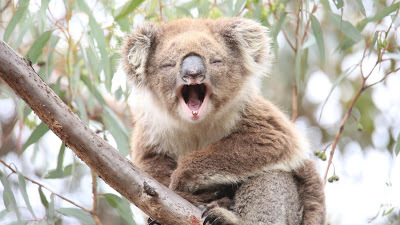
Koala Reproductionand Life Cycles
During the breeding season, males can be heard producing loud booming calls through the forest which are to both attract a female mate but also to deter any potential rivals. In Koala society it is the dominant male that gets to mate with the most females meaning that although males (like females) are able to reproduce from the age of two, breeding is not normally successful until the male Koala is between 4 and 5 years old and has established his dominance.
After a gestation period that lasts for a mere 35 days, a single joey is born that is about the sizeof a bee and very underdeveloped, and immediately crawls unaided into the pouch on its mother's belly. Here it attaches itself to one of the two teats and remains in the safety of the pouch until it is weaned at between 6 and 7 months old after having grown dramatically. The young Koala then clings onto its mother's back where it tends to remain for another few months or until the next season's young has developed and is ready to leave the pouch.
Koala Dietand Prey
The Koala is a herbivorous animalthat only feeds on the leaves of the eucalyptus (gum) tree in orderto survive. Despite there being around 600 different speciesof eucalyptus, Koalas only seem to feed on 30 of them which depends on the surrounding habitat. Eucalyptus leaves are tough and fibrous and often toxic making them inedible to other herbivorous animalsbut the Koala has evolved to fill this gap in the eco-system and has large cheek pouches where the leaves are stored. Once full, the Koala then begins to grind the leaves down into a pulp using their flat cheek teeth with some of the toxins then being detoxified by the liver. The Koala also has an incredibly long digestive tract to help it to break down the tough leaves which is more than three times its body length. In orderto help the process Koalas are also known to occasionally eat soil, bark and gravel to aid the digestion of such a fibrous plant.
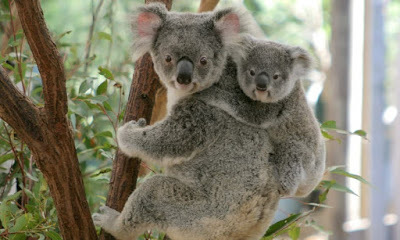
Koala Predatorsand Threats
Despite being relatively small, the lack of native mammalian predatorsin Australiameans that adult Koalas have very few natural predatorswith the exception of large Birdsof Prey. Young Koalas are more vulnerablehowever and are preyed on by a number of different animalsincluding Snakes, but both are most threatenedby domestic animalsparticularly dogsthat not only attack Koalas but are also known to spread disease into local populations. This is actually one of the biggest threats to Koalas in certain areas as large numbers of individuals have been affected particularly by the Chlamydia bacterium, which can actually be treated with antibiotics. Other threats to the current Koala populations include habitatloss to growing Humansettlements, tourist developments and forest fires that can spread rapidly in semiarid regions. The Koala populations on a number of islandshave also been affected by over-population as the increasing number of individuals means that there is less food to go around.
Koala Interesting Facts and Features
Due to the fact that Koalas sustain themselves on a dietthat is only comprised of leaves they have little need to drink as they get almost all of the water that they need through their food. However, living on a dietthat is so low in nutrients has led to the Koala evolving a very small brain for its body sizeas this organcan drain the body's energy supplies. After having spent their first six months of life developing in their mother's pouch suckling milk, baby Koalas must then attempt to eat solid foods with the first one being the soft droppings of their mother. Young Koalas are thought to do this as it contains a number of microbes that help the young to both fight off disease and to begin digesting the tough, fibrous leaves of the eucalyptus.
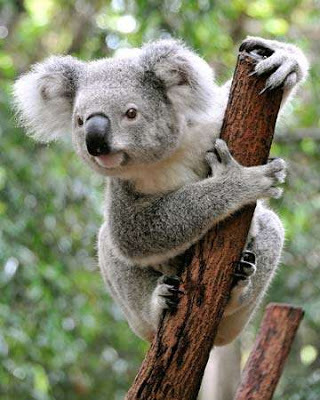
Koala Relationship with Humans
The Koala would have once been abundant throughout the forests of south-eastern Australiabut intense hunting of them for their soft fur in the early 20th Century led to drastic population declines and even local extinction in some areas. When the industry peaked in 1924 two million pelts were traded and eventually led to public outcry over the situation. Since then, the hunting of Koalas has been banned and management of populations has seen them increase once again. Despite their rising population numbers though, Koalas are affected by Humanactivity throughout much of their natural range mainly in the form of habitatloss as vast areas of land are cleared annually for development and agriculture. However, the Koala today is one of Australia's most famous and treasured speciesof mammaland is found on numerous emblems and in stories not just in Australiabut worldwide.
Koala Conservation Status and Life Today
Today, the Koala is listed by the IUCN as an animalthat is of Least Concern from becoming extinctin its natural environment in the near future. Population numbers are not just stable and widespread, but they are in fact too high in some areas with 10,000 individuals having been relocated back to mainland Australiaover the past 75 years to prevent islandpopulations from growing out of control. They are however, becoming more and more remote and isolated from one another which could cause problems in the future and are severely affected by introduced diseases in certain areas. Where possible though, infected Koalas (and particularly those that have been attacked by domestic dogs) are given veterinary first aid to try and help them in the future and prevent a large outbreak spreading through entire populations.
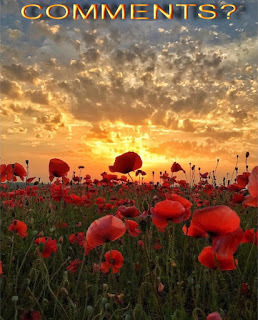
Clancy's comment: I've photographed many of these creatures over the years. Most of them have been found snoozing in a tree as seen below.
I'm ....
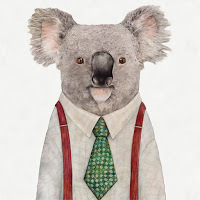


Published on July 03, 2018 14:26
July 2, 2018
3 July 2018 - WEIRD AND WONDERFUL STUFF
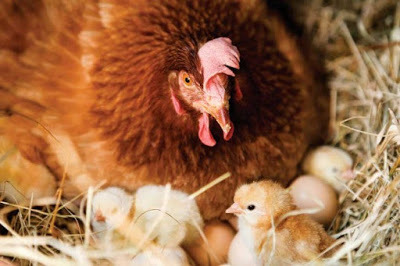
WEIRD AND WONDERFUL STUFF
G'day folks,
It's always great to be amused and look at simple and amusing things in this rugged world. Now, having said that, check out these fine examples.
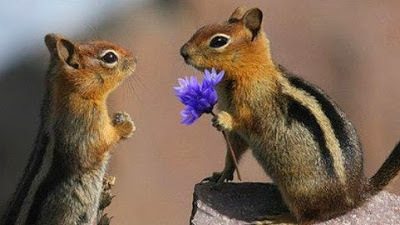

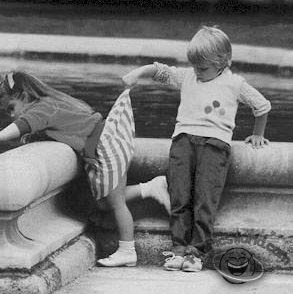
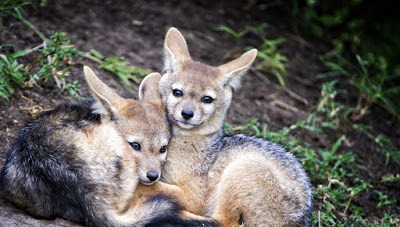
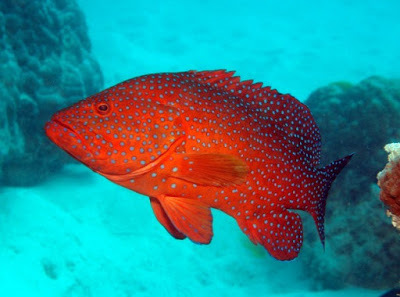
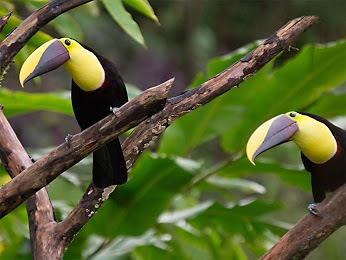

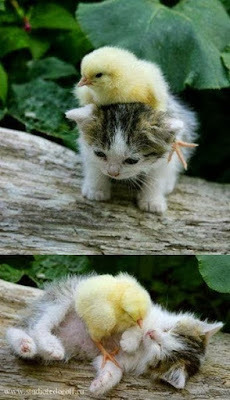
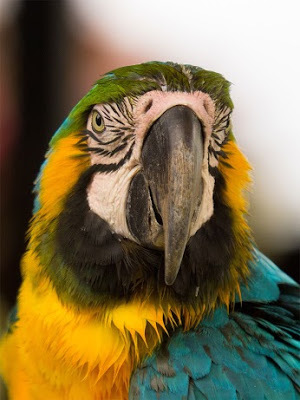
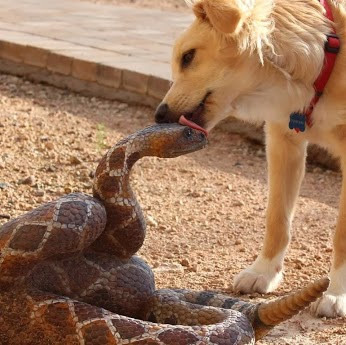
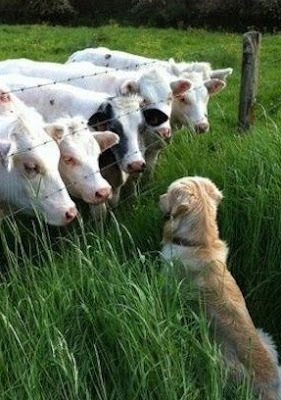
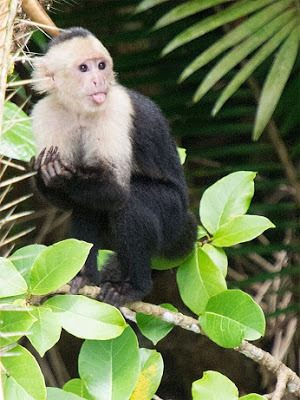


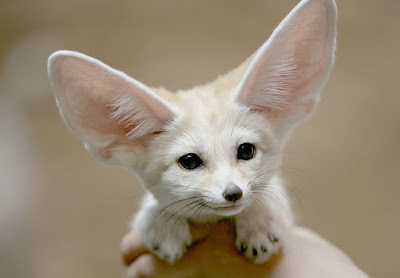
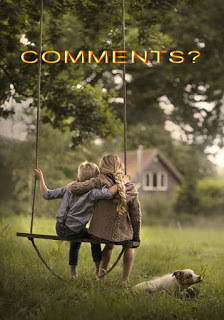
Clancy's comment: Mm ... So refreshing from the daily news we read.
I'm ...
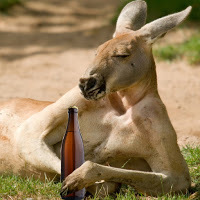
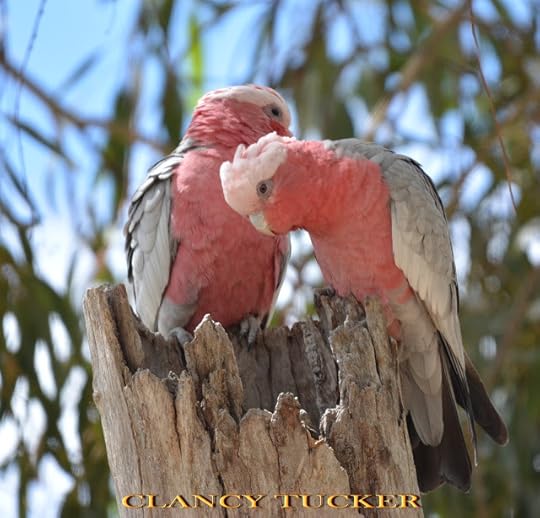
Published on July 02, 2018 15:03



